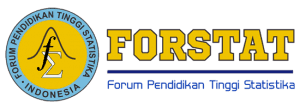STRUCTURAL EQUATION MODELING-GENERALIZED STRUCTURED COMPONENT ANALYSIS TO ANALIZING STRUCTURE OF POVERTY IN INDONESIA IN 2022
Abstract
Structural Equation Modeling - Generalized Structured Component Analysis (SEM-GSCA) is a component-based method suitable for limited sample sizes. GSCA is appropriate for structural models that include variables with reflective and formative indicators. This study utilizes the Alternating Least Square (ALS) parameter estimation. Iterations in ALS are used to achieve minimal residuals. Additionally, this study employs jackknife resampling to obtain standard error estimates. This study aims to identify the poverty model structure in Indonesia and examine the relationships among poverty, human resources, economic, and health variables. The results of the structural model of poverty in Indonesia are explained as follows: the influence of human resources and economic variables on poverty is insignificant, while the health variable significantly negatively influences poverty. Furthermore, the health variable significantly influences human resources, and both human resources and health significantly influence the economy.
Downloads
Copyright (c) 2025 VARIANCE: Journal of Statistics and Its Applications

This work is licensed under a Creative Commons Attribution-NonCommercial-ShareAlike 4.0 International License.



 Editorial Team
Editorial Team
 Peer Review Process
Peer Review Process Focus & Scope
Focus & Scope Open Acces Policy
Open Acces Policy Privacy Statement
Privacy Statement Author Guidelines
Author Guidelines Publication Ethics
Publication Ethics Publication Fees
Publication Fees Copyrigth Notice
Copyrigth Notice Plagiarism Screening
Plagiarism Screening Digital Archiving
Digital Archiving





